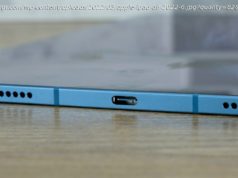While it may seem overkill on paper, Samsung is aiming to provide something for every user, with four cameras at the back of the Galaxy A9 (2018).
Samsung, in many ways, can be credited with starting off the smartphone camera innovation with the Galaxy S7 lineup. Since then phone manufacturers across the world have been making radical attempts to push the boundaries of mobile photography, armed with dual cameras, AI-assisted software and more processing power under the hood. While software innovation has been the focal point of innovation for many phonemakers, the South Korean giant seems more inclined towards hardware-based progress.
Hence, after unveiling its first triple-camera smartphone with the Galaxy A7 (2018) ( review), Samsung has pushed the boundary further with the world’s first four-camera phone — the Galaxy A9 (2018) ( first impressions). Alongside the standard, ultra-wide angle and ‘live focus’ cameras that the A7 2018 came with, the A9 2018 has further added a telephoto camera into the mix. So today, as the brand has unveiled the handset in India, let’s take a closer look at the quad-camera setup of the Samsung Galaxy A9.
Of the four cameras that are present on the back of the Galaxy A9 (2018), the main unit is a 24MP shooter paired with an f/1.7 wide aperture lens and standard field of view. The second snapper is the newly-introduced 10MP, f/2.4 telephoto camera, which also takes peripheral information from the main camera and the third unit — the 5MP depth-sensing sensor. This third camera does not actively take photographs per se, but as Samsung calls it, helps in ‘live focus’ of subjects, or in simple words, it enables the portrait mode. The fourth unit is the ultra-wide angle unit, which uses an 8MP sensor paired with an f/2.4 lens with 120-degree field of view.
All of this is controlled via Samsung’s heavily customised camera app, where the brand has attempted to refine the user interface to make operations smoother. The app includes a slider to select which focal length you wish to shoot in — wide angle, standard or telephoto, pinch-to-zoom (2x telephoto, and digital zoom beyond that), and Samsung’s AI-assisted scene detection mode, which automatically selects the optimal settings from 19 stored presets. In essence, the Chaebol wants to provide you with a smartphone that covers every possible scenario that you can think of, but whether it truly performs well or not remains to be tested.
With four camera units onboard, operations do seem a bit complex on the Galaxy A9 (2018). For starters, for standard photography, the main camera shoots as an independent unit, aided by the Live Focus camera to gather depth of field and additional luminance (brightness and contrast) data. In such situations, the f/1.7 aperture lens also helps in providing more light in dim settings, which Samsung hopes will aid low-light photography.
The new telephoto camera works in tandem with the main unit. While the dedicated telephoto camera only has a resolution of 10MP, photos shot in 2x optical zoom are of 24MP resolution. This means in telephoto mode, all but the wide-angle camera are active, and the main camera supplies extra details to the zoomed-in photographs, including additional brightness, contrast, saturation and colour information. The Live Focus camera supplies depth information.
The 8MP wide-angle camera, meanwhile, reportedly works independently from the main and telephoto cameras, with only the Live Focus camera being available to capture depth. Samsung possibly imagines far lesser usage of this mode, as not only does it produce (relatively) lower-resolution photographs (restricted to 8MP and lesser), it does not use information from the main module to produce better wide-angle results. It’s also worth noting that in this mode, pinching down on the camera app does not take the field of view (FoV) straight to wide angle, and you have to select it specifically from the FoV slider. Even in terms of shooting videos, while the main and telephoto units can shoot 4K videos, you can only obtain full HD videos in the wide-angle mode.
Making the most of this hardware configuration is Samsung’s AI-based algorithms. Alongside the scene presets, the AI engine also includes options such as post-shooting refocus, blink and blur rectification and even backlight retouching in case of photos with harsh lighting imbalance.
But, even if you do not use all of the features regularly, it certainly would not hurt to have all the options at hand, so that you can call upon them when needed. What now needs to be seen is how good the Samsung Galaxy A9 (2018) is in terms of the final photographs, how it fares in comparison to the likes of the Google Pixel 3 XL ( review) and Apple iPhone XS ( review), and whether the compromise (if any) is worth the exchange in terms of all the features onboard. One thing is certain, though — this is Samsung’s idea of a future smartphone camera, equipped with all features to suit every type of user.






